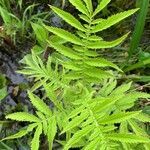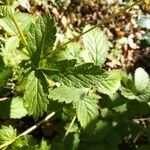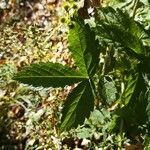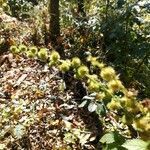Roots tuberous-thickened; stems stout, to 1 m or more, densely short-hairy and ± hirsute; stipules lanceolate to semi-ovate; principal lfls of the larger lvs 5–13, lanceolate to elliptic or narrowly obovate, coarsely serrate, glabrous, scabrellous, or sparsely pubescent above, velvety-pubescent beneath; axis of the infl densely short-pubescent; mature hypanthium campanulate, 2.5–3 mm, minutely strigose in the deep furrows, also ± beset with short stiff ascending hairs, especially below. Dry, open woods; Me. to Mich. and se. S.D., s. to N.C., Ga., and Okla.




